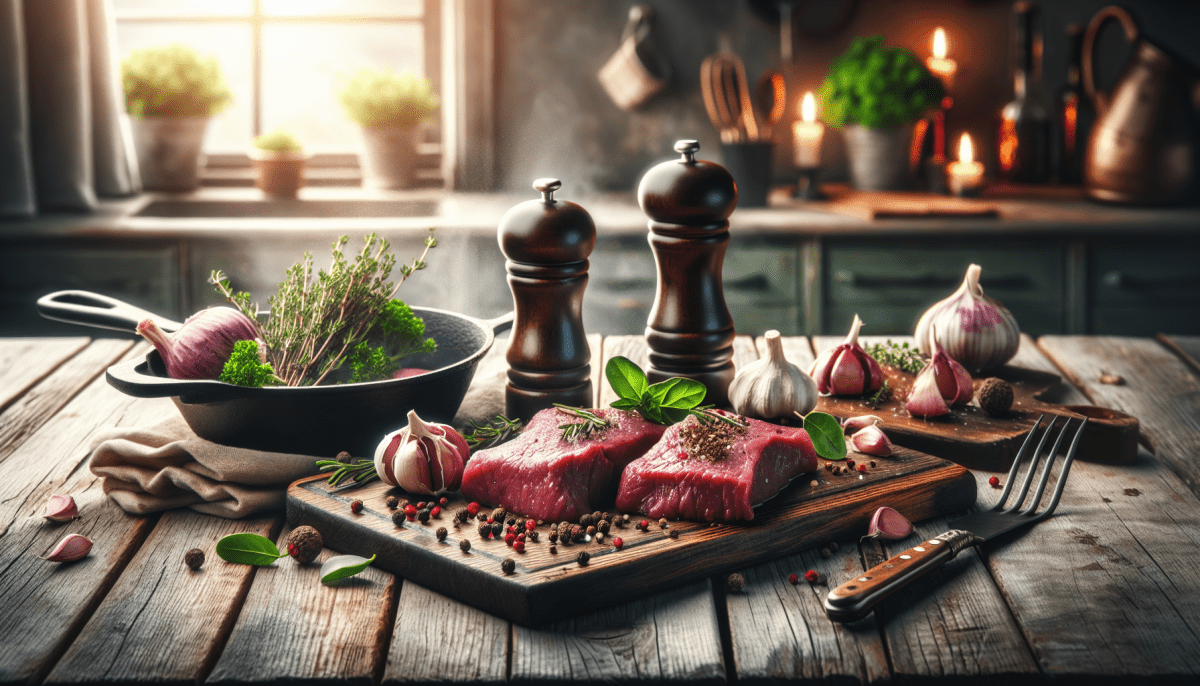Understanding the different types of venison and their cuts is essential for anyone looking to master venison cooking techniques. Venison generally refers to the meat of deer, but it can include other game animals like elk, moose, and antelope. Each type of venison has its unique flavor and texture, which can greatly affect the cooking methods you choose. For example, deer venison is often leaner and has a slightly sweet taste, while elk tends to be milder and has a richer flavor.
When it comes to venison cuts, there are several key parts to familiarize yourself with. The most common cuts include the tenderloin, loin, and shoulder. The tenderloin is the most tender part and is perfect for quick cooking methods like grilling or sautéing. The loin, found along the back, is also flavorful and can be roasted or cut into steaks. The shoulder, on the other hand, is tougher but is ideal for slow cooking methods like braising or stewing, where it can become incredibly tender.
Other cuts worth noting are the ribs, shank, and brisket. The ribs are flavorful and great for slow cooking or smoking, while the shank is the lower leg cut that's excellent for braising due to its connective tissue. The brisket, while not as commonly used in venison, can yield rich flavors when cooked low and slow. By understanding these cuts and their unique characteristics, you can better match your cooking techniques to the meat's specific qualities.
Furthermore, the way you prepare the venison before cooking can enhance its flavor. Marinating is a popular technique that can help tenderize tougher cuts and infuse them with additional flavors. A simple marinade of olive oil, vinegar, herbs, and spices can work wonders. Allow the meat to soak for several hours or overnight for the best results. Knowing the right cuts and preparation techniques will set you up for success as you dive into delicious venison recipes.
Essential Tools for Cooking Venison
When it comes to cooking venison, having the right tools on hand can make all the difference. Whether you’re a seasoned chef or just starting out, here are some essential tools that will help you master the art of venison cooking.
First and foremost, a sharp chef’s knife is crucial. Venison can be tougher than other types of meat, so a sharp knife will make the task of cutting and trimming much easier. Look for a knife that feels comfortable in your hand and is easy to maneuver. Additionally, a good cutting board is important. Ideally, you want a sturdy board that can handle the weight of the meat and prevent slipping as you work.
Another key tool is a meat thermometer. Venison is best enjoyed when cooked to the right temperature, and a digital meat thermometer can help you ensure it’s cooked perfectly. Aim for an internal temperature of 130 to 140 degrees Fahrenheit for a medium-rare finish. This will ensure that the meat remains juicy and flavorful.
Don’t forget about marinating containers! Venison often benefits from a good marinade to enhance its natural flavors and tenderize the meat. Look for containers that seal tightly to prevent leaks and allow the marinade to evenly coat the meat. Lastly, having a trusty cast-iron skillet or grill can elevate your cooking game. These options provide excellent heat retention and create a wonderful sear on your venison.
Easy Cooking Methods for Tender Venison
When it comes to cooking venison, achieving tenderness can be a challenge for many home chefs. However, with the right techniques, you can master easy cooking methods that bring out the rich flavors of this lean meat while ensuring it remains juicy and tender. Let’s explore some foolproof ways to prepare venison that will impress your family and friends.
One of the simplest methods for tender venison is marinating. A good marinade can make a significant difference in the texture and taste of the meat. Combine ingredients like red wine, olive oil, garlic, and herbs for a flavorful soak. Allow the venison to rest in the marinade for at least a few hours, or ideally overnight. This not only enhances the flavor but also helps break down the muscle fibers, resulting in a more tender final dish.
Another effective technique is to use slow cooking methods, such as braising or stewing. Cooking venison at low temperatures for an extended period allows the meat to become incredibly tender. Try searing the meat to lock in flavor, then add your favorite vegetables, broth, and spices to the pot. Cover and let it simmer for a few hours, and you’ll be rewarded with velvety, flavorful venison that melts in your mouth.
If you’re short on time but still want tender venison, consider using a pressure cooker. This method drastically reduces cooking time while keeping the meat juicy. Season the venison and add some liquid, then lock the lid and cook under high pressure. In just a fraction of the time it would take to cook through traditional methods, you’ll have a delicious and tender venison dish ready to serve.
Flavoring Venison with Simple Marinades
Venison, with its rich and robust flavor, benefits immensely from marinating before cooking. Simple marinades can elevate the taste and tenderness of this lean meat, making it more enjoyable and succulent. The key to effective marinating lies in choosing the right ingredients that complement the natural flavors of venison without overpowering them.
A basic marinade can consist of a combination of acid, oil, and seasonings. For the acid, you can use ingredients like vinegar, citrus juice, or yogurt. These not only help to tenderize the meat but also infuse it with flavor. Olive oil or another neutral oil can be added to ensure the meat remains moist and flavorful during cooking. Finally, a good mix of herbs, spices, and aromatics—such as garlic, rosemary, or black pepper—can enhance the overall profile and add depth to your dish.
To create your marinade, start by mixing equal parts acid and oil. Then, add your chosen seasonings according to your taste preferences. For example, if you’re aiming for a more Mediterranean twist, consider adding oregano and lemon juice. For a richer flavor, try mixing in soy sauce, brown sugar, and ginger. Allow the venison to marinate for at least two hours, or overnight if you have the time, to ensure the flavors penetrate deeply.
When it’s time to cook, remember to pat the meat dry to achieve a good sear, locking in all those delicious flavors. You can grill, roast, or pan-sear the venison as desired. The marinating process not only enhances the taste but also helps balance the gamey flavor often found in venison, making it approachable for new and seasoned cooks alike.

